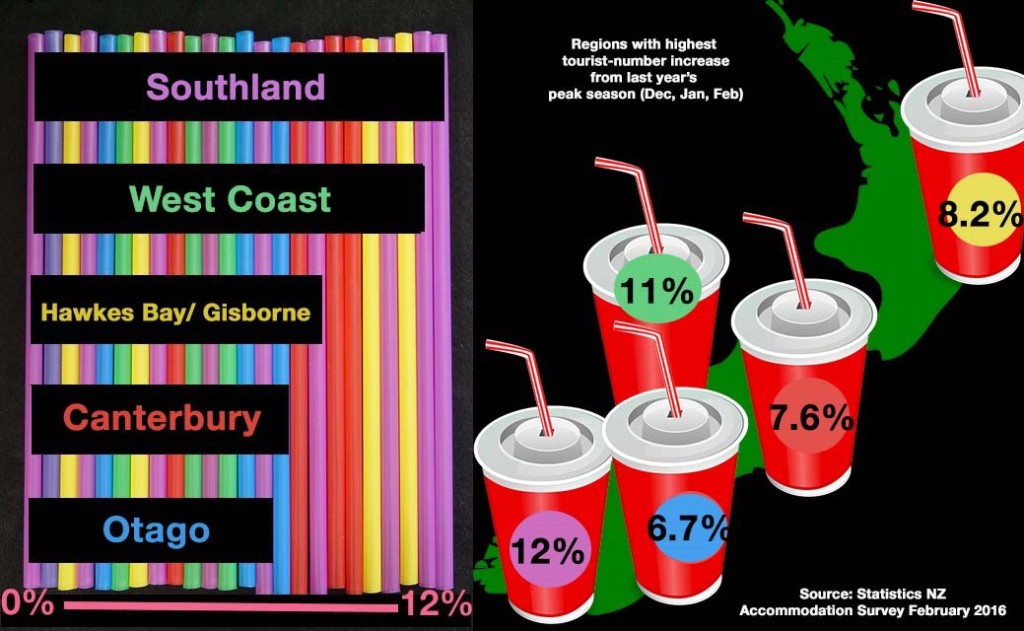Tourism towns draw the short straw
A distributer of plastic drinking straws like the hundreds found along the lakefront at Queenstown last weekend says there is a link with tourist numbers.
In just 45 minutes, hundreds of plastic drinking straws were collected from a stretch of Queenstown’s lakeshore by environmentalists last Sunday.
Sustainable Coastlines programmes manager and oceanographer Oliver Vetter has said plastic drinking straws are unnecessary and should not be part of New Zealand’s future.
 “There’s absolutely no reason ever to use a plastic drinking straw,” Vetter said.
“There’s absolutely no reason ever to use a plastic drinking straw,” Vetter said.
Along with plastic bags, Vetter said plastic drinking straws were a meaningless product.
“They’re often wrapped in a plastic wrapper, and this is the sort of thing we need to get out of people’s psyches as to what is normal, because it shouldn’t be normal.
“It’s pushed upon us and we should just be refusing it. Single-use plastic products are just lazy business and very damaging to the environment.
“It might be a fraction of a penny cheaper to make it plastic each time, but the long term cost is unmeasurable.”
Ken Graham, marketing manager for Uni-Pak — a company which supplies plastic drinking straws to some of the biggest fast-food companies in New Zealand —confirmed that regions with higher tourism, such as Queenstown, had a higher demand for plastic straws.
A growth in tourism had correlated with a growth in plastic straw sales, Graham said, so tourist-towns like Queenstown and Rotorua had been ordering higher amounts.
PureSip — the only company which manufactures drinking straws in New Zealand — preferred not to comment on environmental issues but also said they had enjoyed increased sales of plastic straws thanks to growth in the tourism sector.
In regard to so many drinking straws washing up on Queenstown’s lakeshore, Graham said it was to be expected if a higher concentration of straws were being sold there.
Graham, who used to work for a recycling company, said Uni-Pak had been trying to make changes toward more environmentally-friendly products, but the facts of supply and demand meant this was not always possible.
“If we could find a waxed paper straw that was easier to market, then yes, we would import those — if we could find them and they would be cost-effective,” he said.
According to Graham there was an 80-20 rule, where 80% of these types of throwaway plastic products were bought by fast-food giants.
“So I think it’s up to those big corporates to lead the way, then you’ll find the smaller businesses will follow suit,” he said.
Graham also criticised the local council for Queenstown’s plastic straw pollution problem.
“I would say that Queenstown’s local council needs to look at its local recycling laws and perhaps ensure that they’ve got ways of more effectively dealing with polypropylene straws.
“We supply products on demand, and if our customers are still heavily in demand for polypropylene straws because their local council’s regulations state that it’s OK, and no by-laws have been put in place to say they can only use compostable straws, then of course, people will carry on using polypropylene.”
Queenstown and Lakes District Council declined to comment.
While New Zealand does have some on-shore soft plastic recycling capability now, Graham, who wrote a special report for recycle.co.nz on New Zealand’s recycling capability back in 2013, believed there were still only about three capable recycling plants in the whole of the country, and that this was obviously inadequate for the amount of soft plastic waste being created.
With tourist numbers steadily increasing, environmentalists’ hopes for a New Zealand free of plastic drinking straws seem unlikely to become a reality any time soon.




